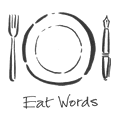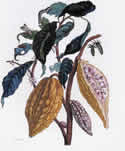It's That Time of Year Again
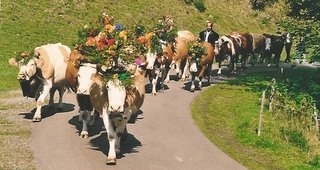 All over Europe in late spring and early summer, countless sheep, goats and cows perform a sort of carefully choreographed dance routine as they move northwards from parched plains to lusher, greener pastures in kinder climates, or from tired winter quarters up to alpine meadows where the grass is just emerging from its snow-covered sleep. The annual transhumance has begun.
All over Europe in late spring and early summer, countless sheep, goats and cows perform a sort of carefully choreographed dance routine as they move northwards from parched plains to lusher, greener pastures in kinder climates, or from tired winter quarters up to alpine meadows where the grass is just emerging from its snow-covered sleep. The annual transhumance has begun.Around the Mediterranean it’s mainly sheep that are moved. In Provence, huge flocks are driven from the harsh, stony landscape of the Crau plain between the Camargue and Aix-en-Provence high up into the Provençal Alps and as far north as Savoie. Tens of thousands of sheep and goats domiciled in Languedoc-Roussillon head for the Cevennes, while for the flocks of Ariège in southwestern France the favoured summer destination is the Pyrenees.
Over the other side in Spain, sheep have been moved for centuries along the ancient Vias Pecuarias that criss-cross the peninsula from north to south and east to west, as they exchange the baked earth of the plains for cooler pastures up high. In Italy it’s the same story with successive waves of animals from the parched areas of Puglia and Lazio to the Abruzzi mountains.
In the more northerly, dairying areas of Europe, the cows are on the move and the distances covered are shorter. In Switzerland and Austria the classic Heidi scene is played out in valley after valley, as café au lait-coloured beasts take joyfully to the alp for their summer grazing.
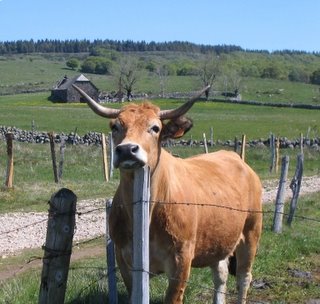 At the end of May in the Massif Central region of France, herds of toffee-coloured Aubrac cows will be decked out with mellifluous cowbells, festooned with spring flowers and escorted up to St Chély d’Aubrac for the annual Fête de la Transhumance. From there they will proceed to their wild and wonderful Aubrac plateau where a feast of fresh green grass garnished with wild narcissus and jonquils awaits them.
At the end of May in the Massif Central region of France, herds of toffee-coloured Aubrac cows will be decked out with mellifluous cowbells, festooned with spring flowers and escorted up to St Chély d’Aubrac for the annual Fête de la Transhumance. From there they will proceed to their wild and wonderful Aubrac plateau where a feast of fresh green grass garnished with wild narcissus and jonquils awaits them.Later, as summer draws to a close and the days shorten and the temperatures start to drop, the same stately dance begins once more as the beasts prepare to regain their winter pastures.
Transhumance has been practised for thousands of years – estimates vary, but it seems logical to date it back to the domestication of the animals themselves. To most of us, safely settled in our urban and suburban environments, it seems like a romantic anachronism, the last vestiges of a nomadic tradition which must surely be doomed to extinction. Romance, in fact, has little to do with it. Transhumance is a tough, demanding way of life that requires specialist training and an ability to work independently in difficult, uncomfortable, sometimes dangerous situations.
As far as the future is concerned, though transhumance seemed doomed a few decades ago, all of a sudden - thanks to the commitment of a number of dedicated players as well as support from people in high places (the EU, Slow Food) – it looks like it’s due for a reprieve.
A key player in the transhumance revival is Roberto Rubino of ANFOSC, an Italian organisation devoted to quality cheeses made from the milk of animals that live outdoors (‘sotto il cielo’). They graze on ancient pastures rich with hundreds of different grasses, wild flowers and herbs instead of being shut up in stables and pumped with artificial food. For his work Rubino has received a Slow Food award for the Defence of Biodiversity.
Whether transhumance is long-distance or local, Rubino is emphatic about the benefits it brings. First there’s the environment. Transhumance strikes a chord today, believes Rubino, because of its genuinely green credentials. By definition it is a form of extensive (rather than intensive) agriculture, a small-scale, sympathetic sort of ‘development’ that is truly sustainable. Without it, the high pastures would revert to scrub with an attendant increased risk of fire, while biodiversity – particularly the flora that flourish in pastures untouched by herbicides and fertilized only by natural manures - would decrease sharply.
Patrick Fabre of the Maison de la Transhumance in St Martin de Crau (Provence) is singing from the same hymn sheet. Like Rubino, he notes that animals fed naturally and grazing out in the open are healthier, while the meat (and/or cheese) they produce is of superior quality and distinctive flavour. Some of these regional products (Sisteron lamb, fromage d’alpage) enjoy Label Rouge and/or Protected Geographical Indication (PGI) status, and command a corresponding premium. For the future there’s talk of a Mountain Label.
Such quality products are the main reason why transhumance is still a viable proposition. While Fabre acknowledges that this is no easy way to make a living, it pays to move animals around in step with the seasons. In the distant past, wool was the point – think only of Florence’s Duomo, funded by the Arte della Lana, the city’s wool guild. Today the value of the fleeces barely covers the cost of shearing; it’s the high-quality meat and dairy products that make it worthwhile.
Fabre also mentions patrimoine – a term he uses to describe a range of centuries’-old traditions and practices associated with transhumance. More than simply an economically viable and eco-friendly way of farming and certainly more than just a job, transhumance is part and parcel of a whole way of life. Without it, isolated mountain villages would wither and die, the mountain cabins would crumble (along with their graffiti, a rich primary source for anthropologists). Disappearance of the drove roads (many of them Roman in origin) would accelerate, cow and sheep bells would no longer be cast and burnished, sticks and crooks no longer carved. Breeds of rustic sheep like the Provençal Merino d’Arles with their superb fleeces and corkscrew horns, which have been selected over centuries for their nomadic suitability and for their fine meat, would be lost.
I admit I’ve always been a bit of a soft touch where transhumance is concerned. But after a couple of hours in a sunlit village café in the foothills of the Provençal Alps listening to Fabre talking with simple fervour about all the things that make this age-old practice so worthwhile, I was totally sold. If a shepherd had happened to stray through the village with his 1500 head of sheep bound for Castellane and the pastures beyond, I’d have been after him like a shot, no questions asked.
It’s not as unlikely a proposition as it may sound - and it seems that my passion for transhumance is shared by plenty of others. Fabre has regular requests via the website (http://www.transhumance.org) from people interested in accompanying the sheep or cattle for all or part of their journey to or from the hills. There’s even an enterprising tour operator, a retired shepherd, who is offering specialized tours.
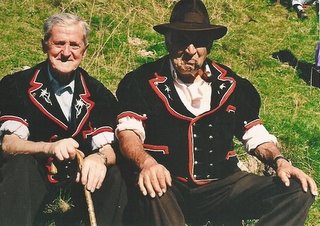 If you’re not up for an 8-hour daily hike over 10-14 days, helping to keep the sheep on track by day and sleeping out under the stars to the sound of howling wolves by night (because protected, these are increasing), there is a soft option. Try one of the countless village-based Fêtes de la Transhumance and alpine cheese festivals where you can meet and talk to the shepherds (like the ones pictured at the annual Chästeilet in Switzerland's Justistal) and tuck into a robust meal with lashings of local wine, probably to the strains of accordions and alphorns.
If you’re not up for an 8-hour daily hike over 10-14 days, helping to keep the sheep on track by day and sleeping out under the stars to the sound of howling wolves by night (because protected, these are increasing), there is a soft option. Try one of the countless village-based Fêtes de la Transhumance and alpine cheese festivals where you can meet and talk to the shepherds (like the ones pictured at the annual Chästeilet in Switzerland's Justistal) and tuck into a robust meal with lashings of local wine, probably to the strains of accordions and alphorns.These initiatives, which help to raise awareness and to preserve the public face of transhumance, are essential. Part of the problem is that transhumance, in Fabre’s words, has become somewhat ‘furtive’. In the past when the whole journey was done on foot, it was visible, celebrated all along the route and at the animals’ final destination. Nowadays the animals are moved largely by truck, travelling at night to stay in the cool and to avoid causing jams on the steep, narrow mountain roads.
Another problem is that use of the high pastures is increasingly contested by several different interest groups (walkers, mountain bikers, horseback riders, hunters), not all of whom are as convinced as you or I that the nomadic way of life is valid but fragile, and in need of support.
At a time when few of us are even aware of the seasons, with little idea of how, when or where our food is produced, transhumance may indeed seem like a relic of bygone days, a throwback to an almost-forgotten rhythm of life when food production was dominated not by spreadsheets and automated feedlots, but by the lengthening and shortening of the days and the waxing and waning of the grass. Yet we should treasure it as a fabulous, timeless practice that preserves our landscape, provides small-scale rural employment, enhances our food, and reminds us of better, slower times.
Copyright Sue Style
